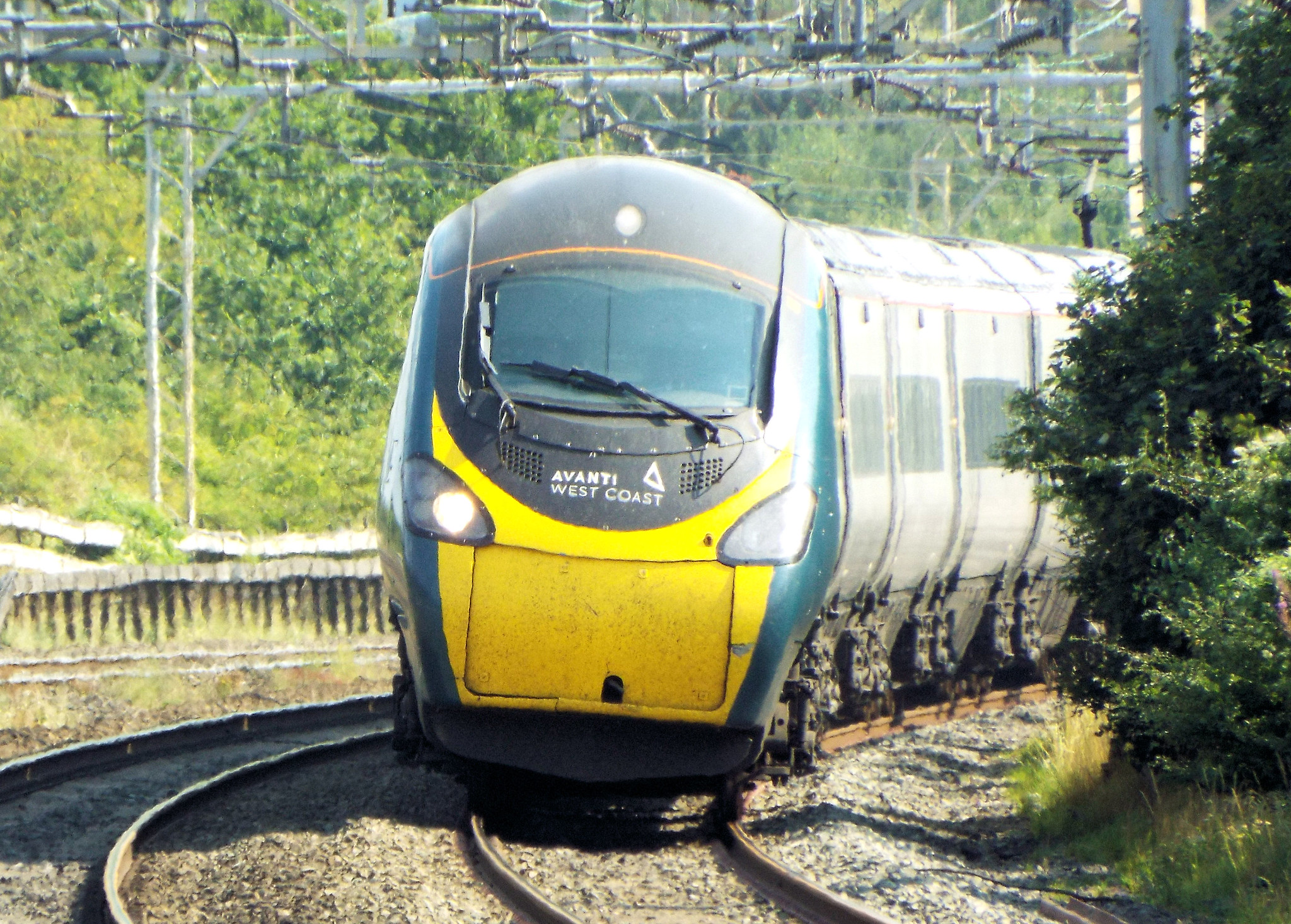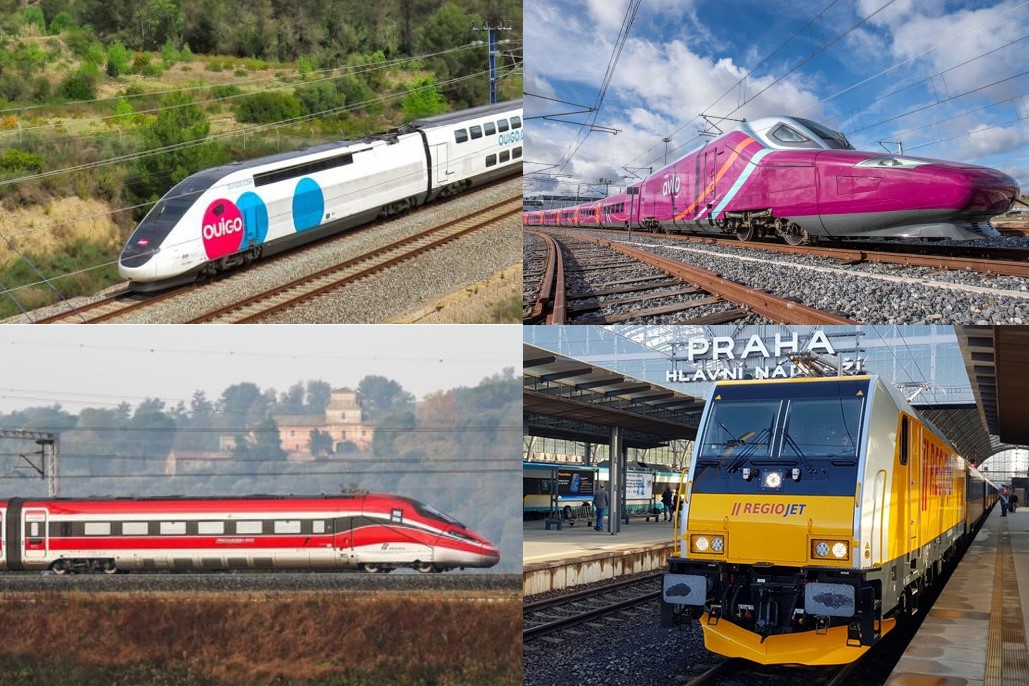(picture above: Mediarail.be)
By Frédéric de Kemmeter – Railway signalling and freelance copywriter – Suscribe my blog
13/02/2022 – (Version en français)
🟧 Back to homepage 🟧 See our brief news
Things are moving fast for the privately owned Munich-based firm. The acquisition in 2021 of the American bus icon Greyhound has shown a change in strategy for the company, which is taking a long-term view. It also has an impact on the company’s rail policy and vision in Europe.
The idea for a bus company was born around 2011 when Jochen Engert and Andre Schwämmlein were working as consultants at the Boston Consulting Group. They exchanged many ideas with each other and with Daniel Krauss, who was still working at Microsoft. Their idea matured later with the deregulation of long-distance buses introduced in Germany in 2013, where private companies were now allowed to sell long distance trips and thus compete directly with Deutsche Bahn.
Flixtrain’s business model differs fundamentally from that of the others new entrant on the market. It is a unique business model, which combines digital technology with a traditional transport company. Unlike traditional transport companies, FlixMobility does not own a fleet of buses or trains. In fact, Flixbus only owns one bus, for licensing reasons…
In other words, FlixBus can be considered an asset-light supply chain management company par excellence. Rather than owning buses and employing drivers, they are the link between customers and bus owners or operators.
And the train came
Around 2016, the idea was to do railway business like Flixbus but differently from Deutsche Bahn, but with one key difference from its predecessors HKX and Locomore: no assets of its own, and marketing and ticketing firepower thanks to the huge amount of data from Flixbus customers. The start-up simply manages technology, marketing, communications, sales, IT, ticketing, quality management, customer service and network planning.
In 2017, the successive bankruptcies of Locomore and HKX encouraged Flixtrain’s entry into the German market. By March 2018, Flixtrain was operating two trains via third parties: Stuttgart-Berlin and Hamburg-Cologne.
Business model
To finance the cost of its operation, FlixBus has implemented a revenue sharing business model. This means that the company shares the revenue from each booking with the partner who made the journey. In the case of FlixBus, they keep 25-30% of the booking price. The rest goes to the train or bus operator. Contracts with their partners normally last 3 to 5 years. Then, depending on performance, they are normally renegotiated. And because they are very confident in their ability to dynamically calculate the ‘right’ prices and attract enough customers, they guarantee to pay a minimum of revenue to their partners.
The coronavirus crisis, however, put a strain on the model: with no ticketing revenue and customers being asked to stay at home, Flixmobility had no plan B: both trains and buses had to be suspended. Trains and buses stopped running from 17 March 2020, both in Germany and beyond its borders.
This situation made many partners, both train and bus, nervous, and some coach operators were burdened with the monthly leasing payments for their vehicles. During the spring lock-up, Leo Express, the rail partner, wanted to continue operating the Stuttgart-Berlin route, which Flixtrain did not want to do due to lack of income. This led to numerous disputes between the two partners, and the FLX 10 Stuttgart-Berlin no longer ran.
Towards a different strategy
The coronavirus crisis led to a rethink of the asset-light strategy and a shift to a different model. Flixtrain could afford to do so as soon as in June 2021 the Munich-based company raised a Series G round of capital, the largest ever in Germany, of €650 million. Flixmobility is now valued at over three billion dollars after its seventh round of funding and has 2,000 employees. This is a far cry from a traditional start-up.
Flixmobility’s initial « asset light » strategy, in which companies keep heavy assets off their balance sheet, has many advantages, such as the possibility of rapid growth bringing good profits once the market is won. The best example of a successful asset light strategy is Apple.
However, this outsourcing policy also has its shortcomings, as it is too slow to set up and requires too much energy at the contractual level. Even if the idea of outsourcing train operations to external partners is a good one, the system carries a certain risk of inertia. A growing company cannot afford this, while young travellers want to strengthen rail transport.
This is why Flixmobility ‘bought’ Greyhound, bringing 1300 buses and 2,400 new employees onto the company’s balance sheet. The idea of acquiring its own trains fits into this logic of controlling its growth. This is what the company has done, but by keeping some of the previous policy, for example by leasing of a hundred or so entirely reconditioned (and asbestos-free) ex-Deutsche Bahn cars via the rental company Railpool.
Such operational and financial arrangements is only possible because of the open rail environment in Northern Europe, where the historical operator prefers to sell its rolling stock rather than scrap it…
This acquisition does not, however, make Flixtrain the owner of these cars, which are owned by Talbot in Aachen. But this formula has allowed the rapid launch of several new routes in Germany and Sweden. Traction is provided by partners such as Hector Rail in Sweden.
Russian trains?
Recently, the German business press got hold of a Flixmobility document intended for investors and banks. Called « Projekt Magistrale », this document mentions the purchase by third parties of 28 long trains and 37 shorter trains, at a cost of around one billion euros. But what is most interesting is that Flixmobility is said to be in negotiations with Tramasholding, Russia’s largest manufacturer of electric and diesel locomotives and electric passenger trains, which includes Alstom! The term « high-speed train » is, however, questionable, given the media’s habit of calling anything above 200km/h « high-speed ». Russian version of the 230km/h « Railjet » or an avatar of the ICE? We don’t know. The strategy is reminiscent of that of WESTbahn and LEO Express with their Chinese CRRC trains, which are still not in service at the moment…
A brand and a strategy
By the end, the company is positioning itself on a very promising niche. Firstly, by creating a strong and visible brand. Secondly, with the importance of sustainable transport at a time when travel is a critical issue with the under-thirty crowd, due to CO2 emissions. The vision of the founders is to create « intelligent and green mobility so that everyone can discover the world ».
As such, they wish to contribute to the reduction of emission levels through collective travel solutions and electric vehicles. With a very strong digital strike force thanks to the hundreds of developers working within the firm. We are far from the environment of historical companies…

13/02/2022 – By Frédéric de Kemmeter – Railway signalling and freelance copywriter
Suscribe my blog
Related topics:
 Transmashholding, the Russian company that is starting up a maintenance business in Europe
Transmashholding, the Russian company that is starting up a maintenance business in Europe
23/01/2022 – Transmashholding, Russia’s leading rail supplier, is expanding into Europe with the ambition of developing the maintenance market for electric and diesel railcars operated by operators throughout Europe. Regardless of the manufacturer…
 Creating a complete and independent railway sector
Creating a complete and independent railway sector
09/01/2022 – The difficulties faced by new entrants in the Continent are characterised by, among other things, the lack of essential facilities such as maintenance workshops, a large fleet of leased rolling stock and specifically trained staff.
 Moving from product to customer: can rail learn from Gafam?
Moving from product to customer: can rail learn from Gafam?
20/06/2021 – Moving from a « product » policy to a « customer » policy is a real challenge for rail. The weight of assets (trains-infrastructure) and cultural habits still largely shape rail policy, but there are, however, some reasons for hope.
 What’s new about long distance operators?
What’s new about long distance operators?
22/08/2021 – There is a lot of movement among the long-distance operators in Europe. This is an opportunity for a brief summary as we enter the last quarter of 2021, featured Trenitalia, Ouigo Espana, RegioJet and Renfe. xxxxxxxxxxxxxxxxxxxxxxxxxxxxx xxxxx xxxxxxxxxx xxxxxxxxxx xxxxxxxxxxx


Vous devez être connecté pour poster un commentaire.